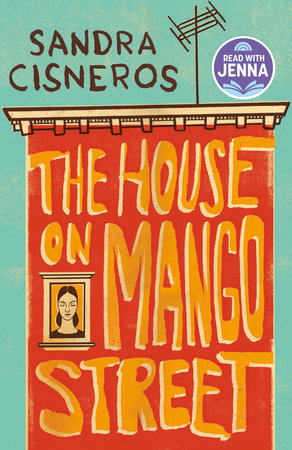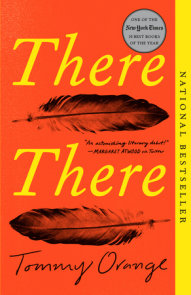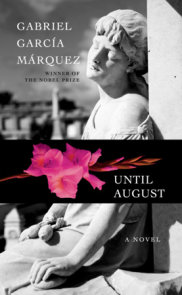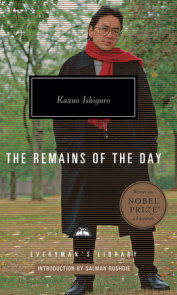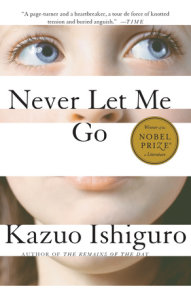TEACHING GUIDE
NOTE TO TEACHERS
The House on Mango Street is a deceptive work. It is a book of short stories—and sometimes not even full stories, but character sketches and vignettes—that add up, as Sandra Cisneros has written, “to tell one big story, each story contributing to the whole—like beads in a necklace.” That story is told in language that seems simple but that possesses the associative richness of poetry, and whose slang and breaks from grammatical correctness contribute to its immediacy. It is narrated in the voice of a young girl—a girl too young to know that no one may ever hear her—but whose voice is completely convincing, because it is the creation of a mature and sophisticated writer. For example, The House on Mango Street appears to wander casually from subject to subject—from hair to hips, from clouds to feet, from an invalid aunt to a girl named Sally, who has “eyes like Egypt” and whose father sometimes beats her. But this apparent randomness disguises an artful exploration of themes of individual identity and communal loyalty, estrangement and loss, escape and return, the lure of romance and the dead end of sexual inequality and oppression.
The House on Mango Street is also a book about a culture—that of Chicanos, or Mexican-Americans—that has long been veiled by demeaning stereotypes and afflicted by internal ambivalence. In some ways it resembles the immigrant cultures that your students may have encountered in books like My Ántonia, The Jungle, and Call It Sleep. But unlike Americans of Slavic or Jewish ancestry, Chicanos have been systematically excluded from the American mainstream in ways that suggest the disenfranchisement of African-Americans. Although Cisneros uses language as a recurring metaphor for the gulf between Mexican-Americans and the majority culture, what keeps Esperanza Cordero and her family and friends locked in their barrio is something more obdurate than language: a confluence of racism, poverty, and shame. It may help your discussion to remind students that the ancestors of many Chicanos did not come to the United States by choice, but simply found themselves in alien territory as a result of the U.S.’s expansionist policy into country that had once been Mexican.
But although The House on Mango Street will have a particularly strong appeal to Latino students, who may never have encountered a book that speaks so pointedly to their own experience, it is a work that captures the universal pangs of otherness—what Cisneros, in her introduction to the tenth anniversary edition (published by Knopf, $18.00), has called “the shame of being poor, of being female, of being not-quite-good-enough.” It suggests from where that otherness comes and shows how it can become a cause for celebration rather than shame. Few students, regardless of their ancestry or gender, will come away from this book without a strong sensation of having glimpsed a secret part of themselves. For, as Sandra Cisneros has written, “You, the reader, are Esperanza…. You cannot forget who you are.”
ABOUT THIS AUTHOR
Sandra Cisneros was born in Chicago in 1954. She has worked as a teacher to high school dropouts, a poet-in-the-schools, a college recruiter, and an arts administrator. Internationally acclaimed for her poetry and fiction, and the recipient of numerous awards, Cisneros is also the author of Woman Hollering Creek and Other Stories, My Wicked Wicked Ways, and Loose Woman. The daughter of a Mexican father and a Mexican-American mother, and sister to six brothers, she is nobody’s mother and nobody’s wife. She lives in San Antonio, Texas, and is currently at work on a novel.
TEACHING IDEAS
The questions, exercises, and assignments that follow are designed to guide your students through The House on Mango Street and to help them approach it as both a work of literature and a window into their own lives. They are divided into sections that test reading comprehension, invite in-class discussion, and suggest avenues of independent study and writing. Students should be encouraged to keep journals in which they record their responses to the work, pose questions for the teacher, and take notes for their written assignments. We feel that The House on Mango Street is especially valuable as an occasion for students to think and write about their own experience: their houses, their families, their neighborhoods, their dreams and disappointments, about the way they relate to the other sex, about the kinds of lives they want and the kinds they fear they may end up living. It is a book that invites empathy, as well as critical intelligence. At different points in your discussion you may want to ask your students about the different feelings Esperanza’s story calls forth, paying particular attention to the different ways in which girls and boys respond to it.
DISCUSSION AND WRITING
I. Comprehension
1. Where did the narrator live before she moved to The House on Mango Street? How were her previous homes different?
2. In what kind of house would she like to live? Does her new home live up to her expectations? Why not?
"Hairs"
3. Who are the members of Esperanza’s family?
"My Name"
4. After whom was Esperanza named? What does her namesake’s story tell you about the status of women in Mexican society?
"Cathy Queen of Cats"
5. Why is Cathy’s family about to move?
"Our Good Day"
6. How does Esperanza make friends with Lucy and Rachel? What makes them better friends than Cathy?
"Marin"
7. Who is Marin? Why is she unable to leave her house? How does she plan to change her situation? Why do Esperanza and her friends admire her?
"Those Who Don’t"
8. How do outsiders see Esperanza’s neighborhood? How does Esperanza feel when she visits other neighborhoods?
"There Was an Old Woman She Had So Many Children She Didn’t Know What to Do"
9. Why does Rosa Vargas cry every day? Why do her children misbehave? What happens to her son Angel?
"Alicia Who Sees Mice"
10. How does Alicia’s father treat her efforts to get an education?
"The Family of Little Feet"
11. What happens to Esperanza when she and her friends are given some cast-off shoes? How do the shoes change them? What effect do they have on the men in the neighborhood?
"A Rice Sandwich"
12. Why does Esperanza want to eat in the school canteen? How does she get her mother to help her?
"Hips"
13. What are the girls doing as they talk about hips? What are hips good for? What does their conversation tell you about their ages?
"The First Job"
14. Why does this story have a misleading title? What happens to Esperanza on her first day at work? What does this episode tell you about her family and their expectations?
"Papa Who Wakes Up Tired in the Dark"
15. Why does Esperanza’s father cry? How does his crying make her feel?
"Born Bad"
16. What happens to Aunt Lupe? Why does Esperanza believe she deserves to go to hell? What special relationship did Esperanza have with her aunt?
"Geraldo No Last Name"
17. Why does Geraldo have no last name? From the information Cisneros provides, do you believe that his death was inevitable?
"Sire"
18. Why is Esperanza afraid of Sire? What do her parents think of him? Why is she so curious about what he does with Lois, and why does this curiosity make her feel as though "everything is holding its breath inside me" [73]?
"No Speak English"
19. What eight English words—or, really, phrases—does Mamacita know? What do they tell you about the ways in which Mexican immigrants relate to the "official," English-speaking culture outside their communities?
"Rafaela Who Drinks Coconut & Papaya Juice on Tuesdays"
20. What is making Rafaela grow old? Who was Rapunzel, and why would Rafaela dream of having hair like hers?
"Sally"
21. Describe the relationship between Sally and her father. How do her schoolmates see her? What transformation takes place when Sally comes home?
"Minerva Writes Poems"
22. Why does Minerva write poems? Why is she black and blue when she comes to visit Esperanza?
"Bums in the Attic"
23. What does Esperanza’s father do for a living? Why has Esperanza stopped joining her family on their Sunday outings?
"Beautiful & Cruel"
24. What is the nature of Esperanza’s "quiet war" [89]? Against whom—or what—is she fighting?
"A Smart Cookie"
25. How would you categorize the things Esperanza’s mother knows? What things might she not know that Esperanza does? Why do you think she left school?
"The Monkey Garden"/"Red Clowns"/"Linoleum Roses"
26. How does the Monkey Garden change? What does Sally do that makes Esperanza so angry? From whom is she trying to save her? What eventually happens to Sally? How does Esperanza feel about her marriage?
"The Three Sisters"
27. How does Esperanza meet the three sisters? What kind of future do they predict for her? What is the responsibility they place on her?
"Mango Says Goodbye Sometimes"
28. How does the ending of The House on Mango Street complete a circle?
II. Language: image, metaphor, and voice
1. Throughout the book Cisneros has Esperanza employ common idiomatic phrases that serve as a kind of shorthand. Analyze some of the following phrases and suggest what Esperanza means by them—and what the author means to tell us about Esperanza herself: a) "But I know how those things go." [5] b) "people like us" [13] c) "We take what we can get and make the most of it" [33] d) "Ain’t it a shame" [66] e) "Same story" [85]
2. In the story "Hairs," Esperanza describes her mother’s hair as being "like little candy circles all curly and pretty." [6] What does this metaphor, and those in the next paragraph, suggest about Esperanza’s feelings for her mother? Where else in the book do metaphor and simile convey information about the narrator as well as about the person or thing she describes?
3. In "Gil’s Furniture Bought and Sold," Cisneros describes the sound of an old music box: "It’s like all of a sudden he let go a million moths all over the dusty furniture and swan-neck shadows in our bones." [20] This technique, in which a sound is described in terms of things seen and felt, is called synesthesia. Where else in the book does Cisneros use synesthesia? Write descriptions of: a) a place, using sounds; b) a piece of music, using smells; c) a meal, using colors; d) a person, using taste and touch.
4. In "Boys & Girls," Esperanza describes herself as "a balloon tied to an anchor." [9] What are the connotations of this metaphor, and what does it tell you about Esperanza? Where else in the book does Cisneros use images and metaphors associated with the sky? What ideas do these recurring images evoke? Where else does Sandra Cisneros use related images to suggest complicated themes?
5. In "Chanclas," an embarrassed Esperanza declines her cousin’s invitation to dance, because her feet "are growing bigger and bigger." What Cisneros is describing is not a literal reality but a feeling that in turn suggests other feelings. In this case, the sensation in Esperanza’s feet tells us about her self-consciousness and embarrassment. Where else does the author use this technique? Describe the following situations in terms of the sensations they might evoke in different parts of your body: a) entering a dark basement b) seeing a pet die c) learning that someone you secretly care for also likes you d) making a speech at your high school graduation e) seeing a baby brother or sister for the first time.
6. The last sentence of the book is: "For the ones who cannot out." [110] Strictly speaking, the sentence is ungrammatical, since "out" is not a verb. Why do you think Cisneros has chosen to break perceived rules of grammar here? Might there be any relation between "breaking" grammar and breaking out of Mango Street?
III. The people on Mango Street
1. Why do you think Cisneros tells the reader about Esperanza’s house before she writes about her name? Why is where Esperanza lives more important than who she is?
2. How old do you think Esperanza is? Where in the book does Cisneros suggest her age?
3. Of what is Esperanza ashamed?
4. What makes her cry?
5. What makes her angry?
6. How does she feel about the men in "The Family of Little Feet," "Chanclas," "The First Job," "Sire," and "The Red Clowns"?
7. Throughout The House on Mango Street, Cisneros’s narrator describes herself from two points of view: as she sees herself and as she believes others see her. We can find an example of this in "My Name": "At school they say my name funny as if the syllables were made out of tin and hurt the roof of your mouth."[11] Where else in the book does Cisneros convey this dual consciousness? How does Esperanza see herself? How does she think other people perceive her?
8. Although Esperanza is clever and often very perceptive, she is still a child, and Cisneros sometimes shows her failing to see the significance of things that would be obvious to someone older. An example can be found on pages 24-5, when Esperanza and her friends take a ride in a flashy car driven by Louie’s cousin, who is promptly arrested by the police. An adult might be suspicious about the new car and would probably not wave so cheerfully when Louie was taken away. What is the effect of making Esperanza what is sometimes called an "unreliable narrator"? Where else in the story does Cisneros use this technique?
9. At the novel’s end, Esperanza declares that she is too strong for Mango Street to keep her forever. What is the nature of her strength? How does Cisneros establish this characteristic elsewhere in the book?
10. What is the significance of the information in so many of the chapter titles, i.e., "Alicia Who Sees Mice," "Papa Who Wakes Up Tired in the Dark," "Minerva Writes Poems"? How important is this information to your sense of who these people are? What other details does Cisneros use to establish them? How would your sense of these people change had the author employed other details—how they look, what they wear, what they do for a living?
IV. Themes: houses; boys and girls/men and women; belonging and not belonging; going away and coming back
1. After rereading the chapters "The House on Mango Street," "Bums in the Attic," and "A House of My Own," write a description of Esperanza’s house. How does she feel about it? How do you think her house might look to a stranger? In what kind of house would she like to live?
2. In "Boys and Girls" [8-9], Cisneros writes, "The boys and the girls live in separate worlds." In "Beautiful & Cruel," there is the declaration "I have decided not to grow up tame like the others who lay their necks on the threshold waiting for the ball and chain." [88] How would you describe the respective worlds in which Cisneros’s boys and girls live? What kind of men and women are they likely to become when they grow up? How would you sum up the book’s depiction of relations between the sexes? Use incidents and descriptions in such stories as "My Name," "Marin," "Alicia Who Sees Mice," "Rafaela Who Drinks Coconut and Papaya Juice on Tuesdays," "Sally," "Minerva Writes Poems," "Beautiful & Cruel," "Sally Says," and "The Monkey Garden."
3. Esperanza describes a number of women as possible role models: Marin [26-7], Alicia [31-2], Sire’s girlfriend Lois [72-3], Sally [81-3, 92-8]. What does she admire about these women? What things can they teach her?
4. In the stories "My Name" and "No Speak English," Cisneros describes a gulf between two languages, a gap of meaning and of feeling. In English, for example, Esperanza means hope; in Spanish, says the narrator, it suggests sadness and waiting [10]. How does Esperanza feel about her two languages—and by extension, about her two cultures? How does she feel about the society outside her barrio? Look particularly at the chapters "Cathy Queen of Cats," "Those Who Don’t," "Papa Who Wakes Up Tired in the Dark," "Geraldo No Last Name," and "Bums In the Attic."
5. When Esperanza visits Elenita to have her fortune told, the witch tells her that she sees "an anchor of arms" and "a home in the heart." What is the possible significance of these visions? How do they tie in to themes Cisneros develops elsewhere in the book?
6. Nearly all the characters in Cisneros’s book dream of escaping. What do they want to leave? Describe the ways in which different people try to escape, as well as the result of their efforts. Do you think that Esperanza’s dreams of escaping are likely to be more successful? How does being poor—as most of these characters are—affect one’s chances of escaping a dead-end neighborhood or fulfilling other dreams?
7. Aunt Lupe tells Esperanza that writing "will keep you free." In what way can writing be an avenue of freedom? What does freedom mean to you? What activity gives you a sense of freedom?
8. The three sisters tell Esperanza, "When you leave you must remember to come back for the others." What do they mean by this? In what way does Esperanza reconcile her longings to escape Mango Street with her loyalty to her origins? How might a writer like Cisneros come to terms with leaving a place like Mango Street? How would you choose to remain faithful to a place you needed to leave?
BEYOND THE BOOK
1. Write a description of your home, using language that tells the reader both how it looks and how you feel about it. Then write a description of the kind of house in which you’d like to live.
2. Read "Hairs," "Laughter," "Papa Who Wakes Up Tired in the Dark," and "Born Bad," paying special attention to the language with which Esperanza describes the members of her family. Then write a description of your own family, using metaphors that not only tell the reader what your relatives look like but that suggest how you feel about them.
3. After rereading the story "My Name," write about your own name. Who gave it to you? What language does it come from? What does your name originally mean? If you were named after someone in your family, tell a story about that person. How well does your name "fit" you? If you were going to rename yourself, what name would you choose and why?
4. Esperanza describes the "Four Skinny Trees" as "four who do not belong here but are here." [74] How does this description reflect her own sense of herself? Where else in the book does Cisneros explore her heroine’s feelings of estrangement? Write a description of an object in your neighborhood that reflects your feelings about yourself.
5. Cisneros offers one view of Chicano culture in The House on Mango Street—the view her main character sees from her street in Chicago. How does this view of Chicano culture fit into the larger social fabric of the United States? What ceremonies and values set it apart? What value does it ascribe to women? Drawing on independent research, present a different—or a more detailed—view of this culture.
6. How might The House on Mango Street be different if the narrator were a boy?
7. How is the book similar to or different from other books you may have read that feature young narrators, for example, Catcher in the Rye, Ellen Foster, or The Adventures of Huckleberry Finn?
ABOUT THIS GUIDE
This teacher’s guide was written by Peter Trachtenberg. Peter Trachtenberg has taught writing and literature at the New York University School of Continuing Education, the Johns Hopkins University School of Continuing Education, and the School of Visual Arts.
COPYRIGHT
Copyright © 1994 by VINTAGE BOOKS
Just for joining you’ll get personalized recommendations on your dashboard daily and features only for members.
Find Out More Join Now Sign In








